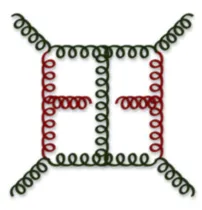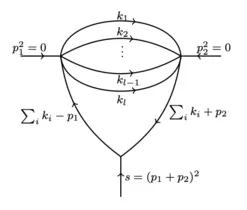HighPHun
High Energy Physics at the Frontier with Mathematics

Project description
How the mathematics of scattering amplitudes could help unravel fundamental physics
The discovery of the Higgs boson at the LHC has confirmed the Standard Model of Particle Physics up to the highest energies ever tested in a laboratory. The Standard Model is based on a rich mathematical framework, Quantum Field Theory. Among the most powerful instruments to extract precise theoretical predictions for physical observables in Quantum Field Theory are the so-called scattering amplitudes: remarkably involved mathematical objects which encapsulate the probabilities of particle collisions. The calculation of scattering amplitudes remains an outstanding mathematical problem, which has become the object of intense study both from physicists and mathematicians. In the last decade many unexpected connections have been discovered between distant fields such as number theory, algebraic geometry, string theory and particle physics. These apparently formal developments have proven to be decisive to investigate fundamental physics at unprecedented energies and precisions. HighPHun positions itself in this exciting context and has two major and intertwined goals:
- To extend our understanding of the mathematical properties of scattering amplitudes and, in this way, help unravel long-standing puzzles in perturbative Quantum Field Theory
- To perform currently out-of-reach calculations in the Standard Model and help to uncover precious details about the most fundamental laws of physics
At the heart of HighPHun is the ambitious goal of combining cutting-edge ideas in physics and mathematics to solve outstanding problems in high-energy physics. The synergies generated by this project will, on the one hand, extend the reach of the LHC and of future colliders searches for elusive signs of New Physics and, on the other, help us develop a deeper mathematical understanding of Quantum Field Theory.
Group Members
An updated list of publication as provided by inspirehep can be obtained by clicking on the name of each group member.
PI: Lorenzo Tancredi
Postdoctoral Fellows: Federico Buccioni, Maximilian Delto, Christoph Nega
PhD students: Philipp Alexander Kreer, Sara Ditsch
Main results obtained
Here we provide a list of the main results obtained from the ERC group, with a link leading to the arXiv version of the corresponding articles. The members of the groups participating to the various projects are provided in brackets.
-
Scattering amplitudes for four-parton scattering at three loops in QCD (Lorenzo Tancredi)
-
Extension of the tensor decomposition method to chiral theories (Lorenzo Tancredi)
-
Computation of non-trivial Feynman diagrams defined on Calabi-Yau geometries (Lorenzo Tancredi, Christoph Nega)
-
Computation of soft functions in QCD (Maximilian Delto)


Main Publications
An updated list of publications for all group members can be obtained by clicking on their names in the previous section.
A selected list of important publications in the context of HighPHun are listed below:
- The ice cone family and iterated integrals for Calabi-Yau varieties (Claude Duhr, Albrecht Klemm, Christoph Nega, Lorenzo Tancredi)
- Two-loop QCD corrections to the V →qqg helicity amplitudes with axial-vector couplings (Thomas Gehrmann, Tiziano Peraro, Lorenzo Tancredi)
- Same-hemisphere three-gluon-emission contribution to the zero-jettiness soft function at N3LO QCD (Daniel Baranowski, Maximilian Delto, Kirill Melnikov, Chen-Yu Wang)
- Three-Loop Gluon Scattering in QCD and the Gluon Regge Trajectory (Fabrizio Caola, Amlan Chakraborty, Giulio Gambuti, Andreas von Manteuffel, Lorenzo Tancredi)